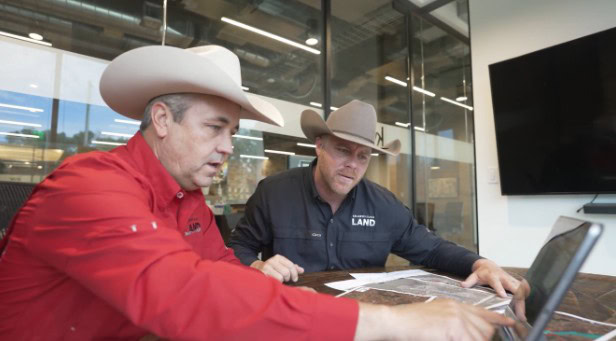Understanding Zoning Laws Before Buying Land
Thinking about buying land? Before you dive in, it’s crucial to understand zoning laws. So what are zoning laws? Zoning laws are regulations that dictate how land can be used and developed within specific geographic areas. For anyone considering buying land, understanding these laws is crucial to avoid costly mistakes and ensure the property aligns with your intended use. This blog will walk you through the key aspects of zoning laws, including their purpose, how they work, and how they can impact your land purchase. Working with local land experts, like agents affiliated with KW Land®, can provide valuable insight into zoning regulations, helping you navigate this important aspect of land transactions and make informed decisions.
What is Zoning?
Zoning laws are a set of regulations that govern how land can be used, developed, and built upon within a designated area. The zoning laws definition encompasses a broad range of rules set by local governments to separate land into different zones, each designated for specific uses like residential, commercial, industrial, agricultural, etc. The primary purpose of zoning laws is to ensure the orderly development of land, balancing the needs of property owners, businesses, and the community while promoting safety, public health, and environmental protection.
Land use planning, which zoning laws are a key part of, is the process of organizing and managing the development of land to meet the needs of a growing population and evolving economy. By regulating land use, zoning laws prevent conflicts between incompatible activities—such as placing a factory in the middle of a residential neighborhood—and help create efficient, functional spaces within communities. These regulations provide a framework for urban growth and development, helping ensure that land is used in ways that contribute to a city’s or region’s long-term sustainability.
History of Zoning in the United States
Zoning laws in the United States emerged in the early 20th century as cities faced challenges related to urbanization and industrialization. These laws were created to regulate land use, prevent conflicts between incompatible uses, and promote the well-being of communities.
One of the earliest zoning regulations occurred in 1908 in Los Angeles, where the city established the first zoning code in the country. This regulation divided the city into residential and industrial districts, ensuring that incompatible uses were kept separate. This foundational step in zoning helped shape future land-use regulations across the nation.
In 1916, New York City passed the New York Zoning Resolution, the first comprehensive zoning code in a major U.S. city. This resolution introduced mapped zones for land use, including residential, commercial, and industrial areas. It also established regulations for building heights, area zones, and setbacks, creating a framework for managing urban growth. The resolution aimed to prevent overcrowding, ensure adequate light and air, and promote orderly development.
In 1924, the Standard State Zoning Enabling Act (SZEA) was introduced by the U.S. Department of Commerce. This model law provided a framework for states to create their own zoning laws, outlining procedures for creating zoning districts, granting local governments zoning authority, and establishing processes for zoning changes. The SZEA played a crucial role in standardizing zoning laws across the country, shaping the growth of urban planning.
Another pivotal moment came in 1926 with the landmark Supreme Court case Village of Euclid v. Ambler Realty Company. The Court upheld the constitutionality of zoning laws, affirming that local governments could regulate land use to protect the public good. This decision established the legal foundation for zoning practices nationwide, empowering municipalities to implement zoning restrictions.
These milestones laid the foundation for modern zoning and urban planning practices, shaping how communities manage land use and development today.
How Zoning Works
Zoning laws are established to manage land use and development within a community, ensuring that growth is organized and compatible with the area’s needs. The process of creating zoning laws involves local governments defining how land within their jurisdiction can be used. These laws divide land into categories such as residential, commercial, industrial, and agricultural, with specific regulations governing what activities are permitted in each zone. Public input and local government planning are key in this process, balancing community needs with future growth.
Once zoning laws are in place, they are enforced by local zoning boards or planning commissions, which review development proposals, issue permits, and ensure compliance with zoning regulations. This may involve regular inspections or reviewing requests for changes in land use. The role of zoning boards is also critical in handling specific cases, such as granting variances or exceptions to the established rules.
Types of Zoning
Zoning laws divide land into various categories, each with specific regulations governing its use. These zoning categories help ensure that land is developed in a way that promotes order, safety, and compatibility within communities. Here are some of the most common types of zoning:
Residential Zoning
Residential zoning is the most common type of zoning and is designed to regulate land use for housing. This category includes single-family homes, multi-family units, townhouses, and apartment complexes. Residential zoning ensures that homes are built in areas suitable for living and that residential areas are kept separate from more disruptive land uses like factories or warehouses.
Commercial Zoning
Commercial zoning is intended for areas that will be used for business purposes, such as retail stores, offices, restaurants, and other commercial establishments. This type of zoning helps ensure that businesses are located in areas where they can serve the public without disrupting residential or industrial areas.
Agricultural Zoning
Agricultural zoning is designed to protect farmland and ensure that it remains available for agricultural use. This zoning category often includes restrictions on the types of structures that can be built and may limit residential or commercial development in order to preserve open spaces for farming, ranching, and related activities.
Industrial Zoning
Industrial zoning is applied to areas intended for manufacturing, production, and heavy industries. This zoning type is designed to separate industrial activities from residential or commercial zones to reduce conflicts between land uses, such as noise, pollution, or traffic congestion.
Rural Zoning
Rural zoning is typically used in less densely populated areas, where land is designated for agricultural use, forestry, or low-density residential development. It helps preserve open spaces and agricultural land while allowing for limited development that aligns with the area’s rural character.
Historic Zoning
Historic zoning is applied to areas with buildings or landmarks that have historical or cultural significance. This zoning type aims to protect and preserve the character of historic districts, limiting changes to the exterior of buildings or structures to maintain the area’s historical integrity.
Aesthetic Zoning
Aesthetic zoning focuses on maintaining the visual appearance of a community. This can include regulations on building design, landscaping, and signage to ensure that developments fit with the desired aesthetic or architectural style of an area. Aesthetic zoning is often applied to commercial or residential developments in specific districts to preserve the visual appeal of the neighborhood.
Mixed-Use and Special Zoning
Mixed-use zoning allows for the combination of residential, commercial, and sometimes industrial uses within the same area or even within a single building. This zoning promotes walkability, reduces traffic congestion, and fosters vibrant, multi-functional communities. Special zoning, on the other hand, includes regulations tailored to unique
Understanding How Zoning Laws Impact on Property Use
Zoning laws play a crucial role in defining property rights by establishing what landowners can and cannot do with their property. These regulations set boundaries on activities such as building height, setbacks, and land use within designated zones. While zoning laws aim to protect community interests and promote orderly development, they can also impact individual property rights when a property owner’s plans conflict with existing zoning rules.
In cases where property owners wish to use their land in ways that zoning laws do not permit, zoning boards may grant variances or conditional use permits. These exceptions allow property owners to bypass certain restrictions, such as building higher than allowed or using land for purposes not typically permitted in that zone. Navigating this process can be complex, so working with a local land expert can help property owners understand how zoning laws may affect their plans and what options are available to them.
How Can Zoning Laws Be Beneficial to a City’s Residents?
Zoning laws serve as a foundation for organized and sustainable urban development, offering numerous benefits to city residents. By designating specific areas for residential, commercial, industrial, and agricultural use, zoning helps create harmonious communities where land use is optimized for safety, functionality, and quality of life.
One key advantage of zoning is organized growth, which ensures that infrastructure such as roads, utilities, and public services can efficiently support a community’s needs. Zoning also supports community planning by guiding development in ways that enhance neighborhoods, prevent overcrowding, and preserve open spaces.
Additionally, zoning laws promote environmental protection by safeguarding sensitive areas like wetlands, forests, and floodplains from inappropriate development. Special zoning designations can preserve historic landmarks, maintain aesthetic standards, and encourage sustainable practices.
By balancing growth and preservation, zoning laws enhance the overall well-being of city residents, contributing to thriving, well-planned communities.
Finding Property Zoning Information
Understanding a property’s zoning designation is a critical step in the land-buying process. Knowing the zoning classification can help you determine whether the property aligns with your intended use and avoid potential setbacks. Here’s some general steps that can help you get started:
- Explore Online Resources
Many municipalities provide zoning maps and ordinances on their websites. These tools allow you to quickly look up a property’s zoning classification and understand the basic regulations tied to it. - Visit Local Government Offices
For more detailed or specific information, local planning and zoning departments can be a valuable resource. They can clarify zoning classifications, permitted uses, and restrictions that may not be readily available online. - Consult Zoning Maps
Zoning maps visually outline how land is divided into categories like residential, commercial, agricultural, and industrial. Reviewing these maps can give you a broader perspective on the property’s surrounding area and its potential compatibility with your plans. - Work with a Local Land Expert
Navigating zoning regulations can be complex, especially when it comes to interpreting restrictions or obtaining variances. Agents affiliated with KW Land® have the experience and tools to access zoning information efficiently and provide insights tailored to your goals.
By combining these resources and leveraging the expertise of a real estate professional, you can gain a better understanding of a property’s zoning and make informed decisions.
Partnering with a Local Land Expert for Zoning Law Guidance
Understanding zoning laws is essential for anyone considering a land purchase. These regulations shape how land can be used and developed, directly impacting property plans and long-term goals. Zoning complexities, such as navigating local ordinances, obtaining variances, or interpreting restrictions, can make the land acquisition process challenging without the right guidance.
This is where local land experts, like KW Land® members, become invaluable. Their deep knowledge of zoning laws and the nuances of land transactions ensures that you are fully informed and prepared to make decisions that align with your vision. Whether you’re buying agricultural land, developing a commercial property, or exploring mixed-use opportunities, KW Land® members can provide the expertise and support you need to navigate zoning regulations with confidence.
Don’t let zoning challenges stand in the way of your land real estate goals. Ready to turn your land dreams into reality? Agents affiliated with KW Land® are here to guide you through zoning laws and land acquisition. Visit the KW Land® member directory to find a local land expert near you.





